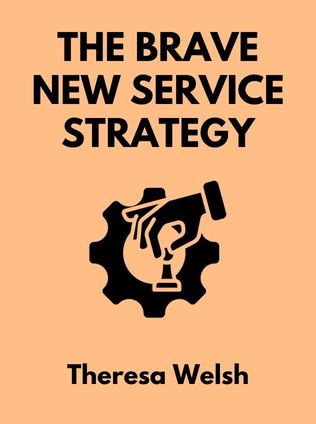
The Brave New Service Strategy
Aligning Customer Relationships, Market Strategies and Business Structures
By Theresa Welsh,
Published 03/2000
About the Author
Barbara A. Gutek is a McClelland professor in the Department of Management and Policy at the Eller College of Business and Public Administration, University of Arizona. She has authored several books, focusing on management and the intricacies of service relationships. Her work delves deep into how businesses interact with their customers and the evolution of these interactions over time. Theresa Welsh is a seasoned business writer and editor, known for her insightful analyses and ability to distill complex business concepts into understandable language.
Main Idea
The Brave New Service Strategy by Barbara A. Gutek and Theresa Welsh explores the transformation of service businesses from personal, relationship-based interactions to more impersonal, encounter-based transactions. The book highlights the dichotomy between relationship businesses, where customers interact with the same service provider repeatedly, and encounter businesses, where customers interact with any available service provider. The authors argue that understanding and strategically managing these interactions can significantly enhance customer satisfaction and business success.
Table of Contents
- Service Businesses - Successful but Merely Adequate
- Encounters and Relationships - Service's Changing Structure
- Managing Links Between Customers, Organizations, and Providers
- Build Tight Customer-Organization Links
- How Encounter Businesses Are Replacing Relationships
- Encounters with Machines
- Enhancing the Encounters
- The Five Qualities
- Interactions Within, Between, and Outside Companies
Service Businesses - Successful but Merely Adequate
Customers today are often dissatisfied with the service they receive. This dissatisfaction stems from companies' attempts to mask the impersonal nature of their service with the façade of a relationship. Gutek and Welsh emphasize the importance of distinguishing between relationship businesses and encounter businesses.
"Customers know they don't have relationships with fast food vendors, airlines, catalog companies, or other organizations - and quite frankly, they know they don't need to." - Barbara A. Gutek
Relationship businesses involve repeated interactions with the same service provider, building a sense of familiarity and trust. Encounter businesses, on the other hand, focus on efficiency and convenience, with interchangeable service providers. The shift from personal service relationships to encounter services has roots in the Industrial Revolution and has continued through various societal changes.
relationship businesses include local restaurants where patrons interact with the same staff regularly, while encounter businesses are exemplified by fast food chains where the focus is on speed and efficiency, not personal connections.
Encounters and Relationships - Service's Changing Structure
The authors discuss how many organizations attempt to create the illusion of relationships with their customers, even though they primarily provide encounters. This attempt often leads to "pseudo-relationships" that can be misleading and ineffective.
In relationship businesses, service providers have a limited number of customers they can serve at any given time, leading to potential wait times or missed opportunities for customers. Conversely, encounter businesses can scale by adding more interchangeable workers to meet demand. For instance, H&R Block can hire seasonal tax preparers to handle the influx of clients during tax season.
Relationship providers tend to be more satisfied with their work and earn more, while encounter providers perform more repetitive tasks with less opportunity for skill development. Managers in encounter businesses focus on designing, implementing, enforcing, and altering the service delivery system to ensure efficiency and profitability.
Managing Links Between Customers, Organizations, and Providers
Gutek and Welsh introduce the concept of three basic elements in service businesses:
Sign up for FREE and get access to 1,400+ books summaries.
You May Also Like
The Lean Startup
How Today's Entrepreneurs Use Continuous Innovation to Create Radically Successful Businesses
By Eric RiesWho Moved My Cheese?
An Amazing Way to Deal with Change in Your Work and in Your Life
By Spencer Johnson, M.D.Make Your Bed
Little Things That Can Change Your Life...And Maybe the World
By William H. McRavenThe Ride of a Lifetime
Lessons Learned from 15 Years as CEO of the Walt Disney Company
By Robert IgerThe Hard Thing About Hard Things
Building a Business When There Are No Easy Answers
By Ben Horowitz



















